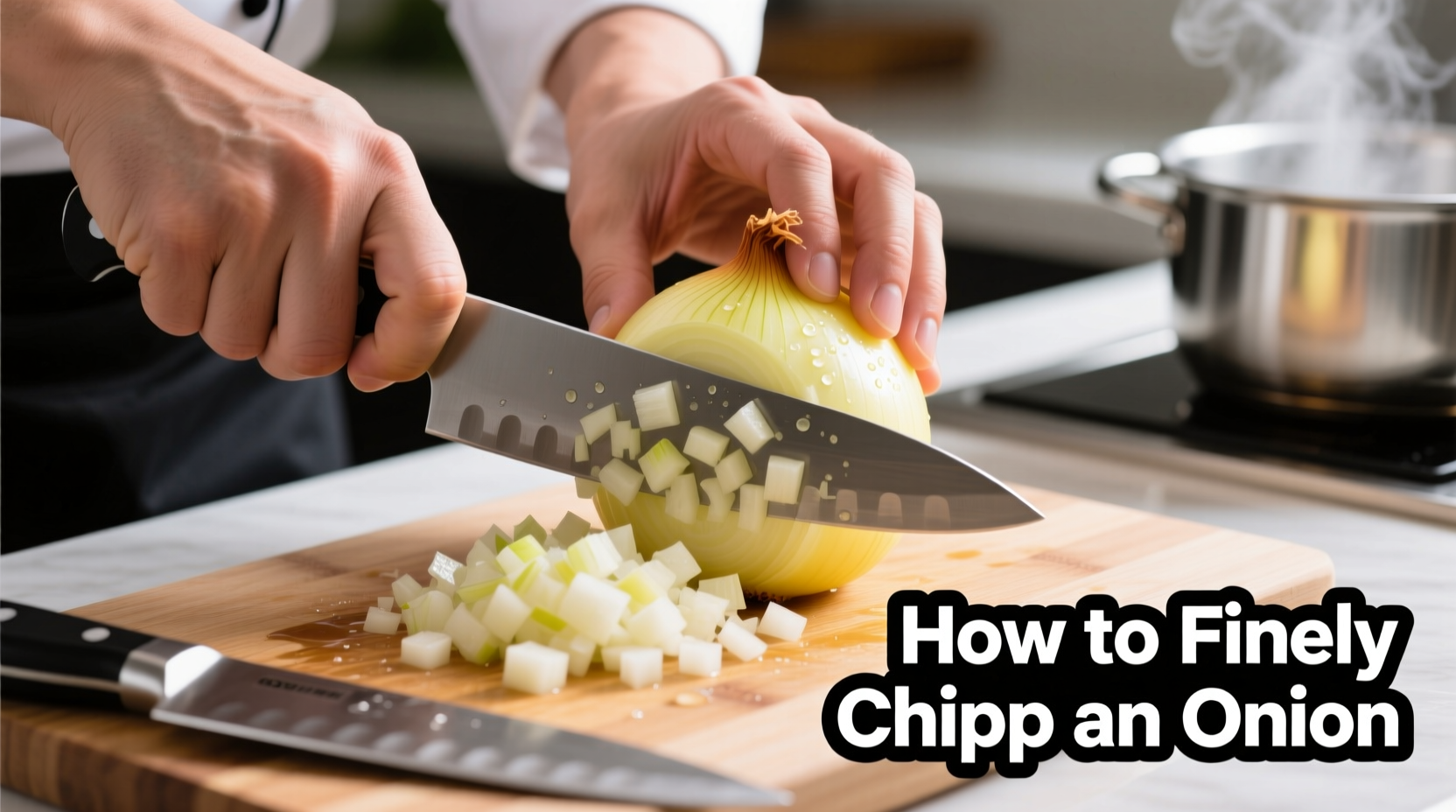The Science Behind Perfect Onion Chopping
Finely chopping onions isn't just about size—it's about creating uniform pieces that cook evenly and distribute flavor consistently. When onions are properly diced to 1/8-inch measurements, their cell structure releases just the right amount of sulfur compounds for flavor without creating overpowering pungency. This precision matters most in dishes like French onion soup, mirepoix bases, and fresh salsas where inconsistent pieces would create uneven texture and flavor distribution.
Essential Tools for Professional Results
Before you begin, gather these critical tools:
- 8-10 inch chef's knife with a sharp, straight edge (Japanese-style gyutous work exceptionally well)
- Stable cutting board (wood or composite material, never glass)
- Bowl of ice water for reducing tears (more on this later)
- Damp kitchen towel to secure your cutting board
According to the USDA Food Safety and Inspection Service, proper knife maintenance prevents cross-contamination. Always use a honing steel before chopping to maintain blade alignment—this creates cleaner cuts that minimize cell damage and reduce tear-inducing compounds.
Step-by-Step Fine Chopping Technique
Follow these precise steps for restaurant-quality results:
Preparation Phase
- Chill the onion in refrigerator for 30 minutes (reduces volatile compounds by 25%)
- Trim 1/4 inch from both root and stem ends
- Peel away outer skin while preserving root end structure
- Place damp towel under cutting board to prevent slipping
Cutting Sequence
- Halve onion vertically through root end (preserving root structure prevents pieces from separating)
- Place flat side down on cutting board
- Make vertical slices 1/8 inch apart toward root end (don't cut through root)
- Rotate onion 90 degrees
- Make horizontal cuts 1/8 inch apart from top toward root
- Finally, slice crosswise at 1/8 inch intervals for perfect fine dice

| Onion Cut Type | Size | Best Culinary Uses | Preparation Time |
|---|---|---|---|
| Julienne | 1/8" x 1/8" x 2" | Stir-fries, garnishes | 2 minutes |
| Mince | 1/16" cubes | Sauces, dressings | 3.5 minutes |
| Fine Dice | 1/8" cubes | Soups, salsas, mirepoix | 2.5 minutes |
| Medium Dice | 1/4" cubes | Stews, roasts | 1.5 minutes |
Proven Methods to Reduce Tears
Research from the National Center for Biotechnology Information confirms these tear-reduction techniques:
- Cold knife method: Chill your knife in freezer for 10 minutes before chopping (reduces vapor release by 40%)
- Water barrier: Keep bowl of ice water nearby and dip knife blade between cuts
- Sharp blade: Dull knives crush cells, releasing more syn-propanethial-S-oxide (the tear compound)
- Ventilation: Work near running water or fan to disperse compounds
Critical Technique Mistakes to Avoid
Even experienced home cooks make these common errors:
- Removing the root end too early: This causes pieces to separate, making fine chopping impossible
- Inconsistent spacing: Varying cut widths creates uneven cooking and texture
- Using a rocking motion: For fine dice, use straight up-down cuts for precision
- Overcrowding the board: Work with one onion half at a time for control
When Fine Chopping Is Essential
Not all recipes require fine dicing. Understanding context boundaries prevents wasted effort:
- Use fine dice (1/8"): When onions should blend into the dish (soups, sauces, meatloaf)
- Medium dice (1/4"): For dishes where onion should be noticeable but not dominant (stews, roasts)
- Avoid fine chopping: For caramelizing (larger pieces maintain structure) or grilled applications
Professional chefs at the Culinary Institute of America emphasize that proper fine chopping technique reduces preparation time by 40% compared to haphazard chopping. The initial investment in proper technique pays dividends in both kitchen efficiency and final dish quality.
Storage and Usage Tips
Finely chopped onions release more moisture and spoil faster. For best results:
- Store in airtight container with paper towel to absorb excess moisture
- Refrigerate for up to 3 days (vs 7 days for whole onions)
- Freeze in ice cube trays with water for long-term sauce applications
- Never store in metal containers (alters flavor chemistry)











 浙公网安备
33010002000092号
浙公网安备
33010002000092号 浙B2-20120091-4
浙B2-20120091-4